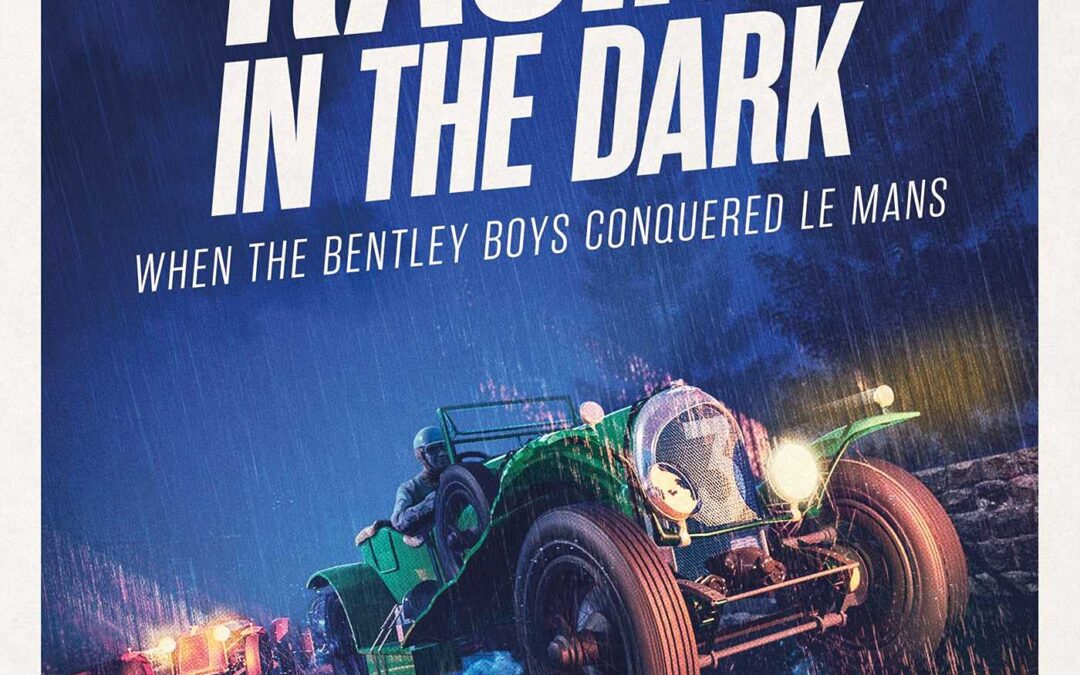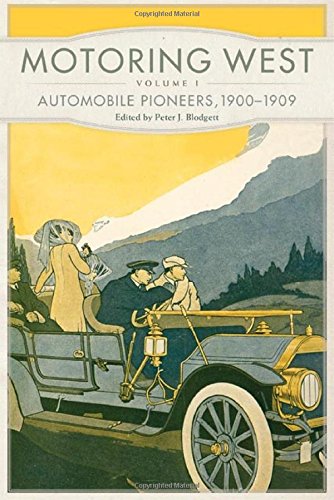
Pitting man and machine against the most challenging natural and manmade elements, this roller-coaster ride takes six cars across six continents to bring you some of the most spectacular car journeys in the world.
From a Smart in Russia to a Ferrari over the mountains of Ecuador, this rollicking combination of bravery, jeopardy, and yes—stupidity, will take you across polar planes in a pick-up truck; up sand dunes in a Toyota Land Cruiser, along remote and rugged coastlines, into the Australian outback; and through the gates of Dracula’s castle in a Mercedes-Benz. You’ll drive in fast cars, cool cars, inappropriate cars, tiny cars, and some very expensive cars in Top Gear’s road trips of a lifetime. Twenty spectacular behind-the-wheel adventures will be irresistible to anyone who dreams of heading for the horizon with a scorch of the tires in a cloud of dust.

‘Glorious…gripping and sometimes tragic’ Robbie Coltrane
The inspirational story of the Bentley Boys and Le Mans – the race they made their own.
Le Mans, 1927. W.O. Bentley peered into the dusk. His three cars, which had led from the start, were missing. Two years running he had failed to finish. Once again he was staring into a void. Racing, his shareholders told him, was a waste of money. This race looked like being his last.
W.O’s engineering skills had been forged on the Great Northern railway and in the skies of the First World War, where Bentley-powered Sopwith Camels took the fight to Germany’s Red Baron. Determined to build and race his own cars, he assembled a crack team from all strata of 1920s Britain, from East End boys Leslie Pennal and Wally Hassan to multi-millionaires Woolf Barnato and Tim Birkin, men in search of adventures to blaze their way out of the dark past.
They dedicated themselves to building the perfect road and racing car. In the hayloft above their workshop, the first Bentley was born and soon it was the car of choice for the fast-living upper classes. They raced at the fashionable Brooklands circuit and then set their sights on the fledgling 24 Hours Le Mans race. An audacious goal for a British car, yet the Bentley Boys rose to the challenge. But on that night in 1927, after the biggest crash in racing history claimed their cars, could they still pull it off and put British motor racing on the map?
In the 1920s, Bentley Motors burned brightly but all too briefly; yet its tale, filled with drama, tragedy, determination and glory still shines a century on.

The Bizarre and Disturbing Adventures of Hitler’s Limousine in America
In 1938, Mercedes-Benz began production of the largest, most luxurious limousine in the world. A machine of frightening power and sinister beauty, the Grosser 770K Model 150 Offener Tourenwagen was 20 feet long, seven feet wide, and tipped the scales at 5 tons. Its supercharged, 230-horsepower engine propelled the beast to speeds over 100 m.p.h. while its occupants reclined on glove-leather seats stuffed with goose down. Armor plated and equipped with hidden compartments for Luger pistols, the 770K was a sumptuous monster with a monstrous patron: Adolph Hitler and the Nazi party.
Deployed mainly for propaganda purposes before the war, the hand-built limousines―in which Hitler rode standing in the front seat―motored through elaborate rallies and appeared in countless newsreels, swiftly becoming the Nazi party’s most durable symbol of wealth and power. Had Hitler not so thoroughly dominated the scene with his own megalomania, his opulent limousine could easily have eclipsed him.
Most of the 770Ks didn’t make it out of the rubble of World War II. But several of them did. And two of them found their way, secretly and separately, to the United States.
In The Devil’s Mercedes, author Robert Klara uncovers the forgotten story of how Americans responded to these rolling relics of fascism on their soil. The limousines made headlines, drew crowds, made fortunes and ruined lives. What never became public was how both of the cars would ultimately become tangled in a web of confusion, mania, and opportunism, fully entwined in a story of mistaken identity.
Nobody knew that the limousine touted as Hitler’s had in fact never belonged to him, while the Mercedes shrugged off as an ordinary staff car―one later abandoned in a warehouse and sold off as government surplus―turned out to be none other than Hitler’s personal automobile.
It would take 40 years, a cast of carnies and millionaires, the United States Army, and the sleuthing efforts of an obscure Canadian librarian to bring the entire truth to light.
As he recounts this remarkable drama, Klara probes the meaning of these haunting hulks and their power to attract, excite and disgust. The limousines’ appearance collided with an American populous celebrating a victory even as it sought to stay a step ahead of the war’s ghosts. Ultimately, The Devil’s Mercedes isn’t only the story of a rare and notorious car, but what that car taught postwar America about itself.

In the first years of the twentieth century, motoring across the vast expanses west of the Mississippi was at the very least an adventure and at most an audacious stunt. As more motorists ventured forth, such travel became a curiosity and, within a few decades, commonplace. For aspiring western travelers, automobiles formed an integral part of their search for new experiences and destinations—and like explorers and thrill seekers from earlier ages, these adventurers kept records of their experiences. The scores of articles, pamphlets, and books they published, collected for the first time in Motoring West, create a vibrant picture of the American West in the age of automotive ascendancy, as viewed from behind the wheel.
Documenting the very beginning of Americans’ love affair with the automobile, the pieces in this volume—the first of a planned multivolume series—offer a panorama of motoring travelers’ visions of the burgeoning West in the first decade of the twentieth century. Historian Peter J. Blodgett’s sources range from forgotten archives to company brochures to magazines such as Harper’s Monthly, Sunset, and Outing. Under headlines touting adventures in “touring,” “land cruising,” and “camping out with an automobile,” voices from motoring’s early days instruct, inform, and entertain. They chart routes through “wild landscapes,” explain the finer points of driving coast to coast in a Franklin, and occasionally prescribe “touring outfits.” Blodgett’s engaging introductions to the volume and each piece couch the writers’ commentaries within their time.
As reports of the region’s challenges and pleasures stirred interest and spurred travel, the burgeoning flow of traffic would eventually and forever alter the western landscape and the westering motorist’s experience. The dispatches in Motoring West illustrate not only how the automobile opened the American West before 1909 to more and more travelers, but also how the West began to change with their arrival.






